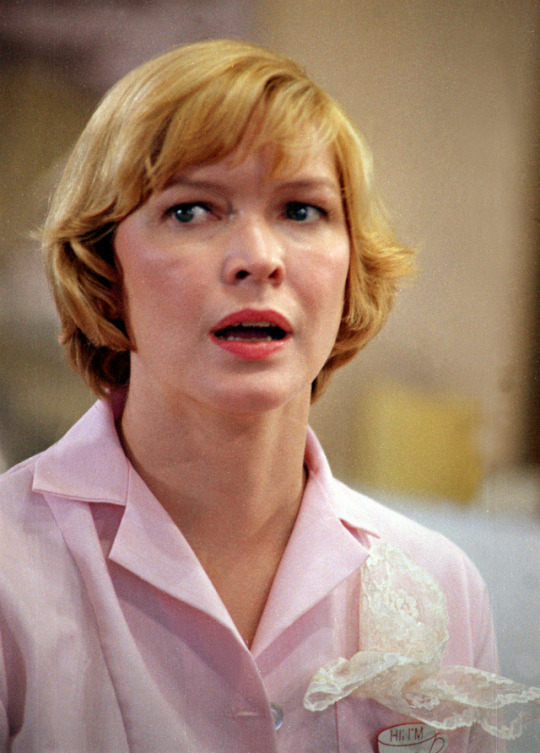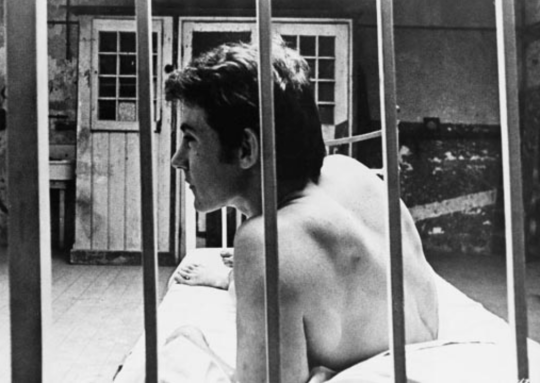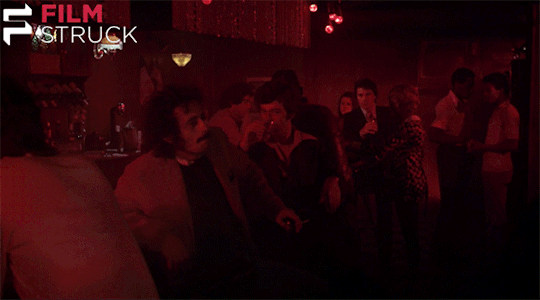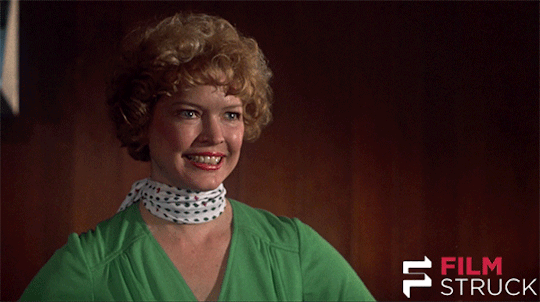#her hot commodity is loose in California
Explore tagged Tumblr posts
Text
It’s nothing it’s just Annabeth having to watch Jason fall in love with Piper, even as he’s gaining back his memories, knowing that her Percy is alone somewhere with no clue who she is and could very well be doing the same
#can she just have one (1) moment of peace#also every other girl that’s ever met him has fallen in love with him#her hot commodity is loose in California#annabeth chase#percy jackson#percabeth#the lost hero#pjo#pjo hoo toa#heroes of olympus#the son of neptune#jason grace
1K notes
·
View notes
Photo

Learning the Ropes: Early Scorsese by R. Emmet Sweeney
Martin Scorsese is not just a name, but a phrase that conjures a world of lower east side street corners, Italian-American toughs and mob rituals. He has built a remarkable resume over 50 years of filmmaking and preservation work that has managed to retain outsized artistic ambitions as Hollywood’s continues to shrink. He has become a living institution, which can sometimes obscure some of the work that built that reputation. FilmStruck is programming three early Scorsese films to re-acquaint ourselves with a portrait of Scorsese as a young director: WHO’S THAT KNOCKING AT MY DOOR (’67), MEAN STREETS (’73) and ALICE DOESN’T LIVE HERE ANYMORE (’74). Today I am writing about the two lesser-known films, WHO’S THAT KNOCKING and ALICE, which show Scorsese inhabiting and reaching beyond his roots.
WHO’S THAT KNOCKING AT MY DOOR took four years for Scorsese to make and get into theaters, first conceived in 1965 while he was still an undergrad at NYU. He received $5,000 in seed money from his professor Haig Manoogian (listed as a producer). It was intended to be the second part of a trilogy in which MEAN STREETS would be the conclusion. The first being the never-produced JERUSALEM, JERUSALEM. The trilogy was to be a semi-autobiographical story of a lower east side NYC striver named J.R. (Harvey Keitel in his first feature – he was making a living as a court stenographer), hanging out in social clubs in between short-term jobs, hoping for a break. The film went through many variations, first as a short film called Bring on the Dancing Girls, which was then incorporated into a feature called I Call First (where it premiered at the Chicago International Film Festival and was positively reviewed by Roger Ebert).

It received its final form after sex film distributor Joseph Brenner agreed to pick it up if Scorsese would add some nudity. Scorsese described to Anthony DeCurtis in 1991: “We shot it in Holland, because I was up in Amsterdam doing some commercials for a friend of mine. We flew Harvey [Keitel] over and we got the young ladies there and we did this nude scene. I came back, kind of smuggled it back into the country in my raincoat, put it in the middle of the film and then the film was released. But it was still a rough sketch to me…ah, it’s the old story: if I knew then what I know now it would be different.”
The film follows J.R. as he kills time with his buddies at their social club and at bars drinking the hours away. But there is also a flashback to J.R.’s fractured relationship with a girl (Zina Bethune) he picks up while waiting for the Staten Island Ferry. She reads F. Scott Fitzgerald while he is an expert in Westerns. Their first conversation revolves around John Ford’s THE SEARCHERS (’56), since there is a photo of John Wayne in the French magazine she is reading. They swiftly fall in love, but J.R. is still something of a child, prone to outbursts and totally uncomprehending that a woman can have an inner life of her own. When she reveals that she has been sexually assaulted, instead of offering solace, J.R. is repulsed, his Roman Catholic upbringing thumping in his brain, telling him she must have brought it upon herself.
Scorsese, deeply under the spell of the French New Wave, proceeds with a heavy use of jump cuts, though here it feels like less of a rhythmic element and more of a way to stitch together disparate footage shot years apart. He was lucky enough to hire Thelma Schoonmaker right off the bat, but here was a reclamation job she could not entirely succeed at. But there is remarkable skill and daring on display here, especially in the use of slow motion, superimposition, and especially in the use of music. The closing montage is a quick-cut portrait of a Roman Catholic church, with The Genies’ “Who’s That Knocking” plastered on the soundtrack, forcefully displaying J.R.’s inculcated roots in the church, the source of his warped views on women, as well as his interest in breaking free. Early on he begs his social club boss Joey (Lennard Kuras) to go get a drink in the Village, and is rebuffed. The Village, and later, the Girl played by Zina Bethune, are symbols of escape. But he doesn’t really understand either. He is shocked when the Girl is upset when he “forgives” her for being assaulted, and retreats back to the cocoon of Joey and his neighborhood pals. There is an extended take at the end of a bar – where J.R., Joey and a young kid they dismissively call Sally Gaga (Michael Scala) sit and laugh. They toss napkins at each other, like high-school kids at lunch having spitball wars. They are still, for all intents and purposes, children. And yet they have been loosed upon the adult world and the poor women who will have to suffer their notions of Catholic guilt.

After MEAN STREETS, Scorsese was a hot commodity and instead of doubling down on small time NYC crime stories, he shifted gears into a sweetly romantic road movie – ALICE DOESN’T LIVE HERE ANYMORE. Instead of NYC, it’s the sunbaked climes of New Mexico and Arizona, where a struggling single mom and singer (Ellen Burstyn) is trying to make her way to California to make a living for her son. Opening with credits in Academy ratio and a booming Miklos Rozsa-esque score, it’s clear this is Scorsese’s attempt at a Hollywood melodrama in the Douglas Sirk mode, only filtered through the New Hollywood sensibility.
Ellen Burstyn approached Scorsese to take on the project. According to the AFI Catalog, she had received the script by Robert Getchell from Warner Bros. president John Calley, and though it had been passed over many times, Burstyn was attracted by the character of Alice. Coming off of THE EXORCIST (’73), she was given her choice of director, as well as final script approval (she also advocated for more women to be hired on the crew, including editor Marcia Lucas and art director Toby Carr Rafelson). MEAN STREETS had not been released yet, but it was getting strong early reviews and the two hit it off. They worked on improving the script together and participated in extensive rehearsals and improvisations (the bit about Alice’s first stage act was Burstyn’s improvisation, drawing on her real-life act with her brother).

The movie begins with a fairytale, WIZARD OF OZ-like back lot set, a pigtailed girl walking down a lane to her clapboard house, only this time with way more cursing. It’s a cutesy way to introduce the character of Alice, who is a combination of sweetness and a salty mouth. The film is really a showcase for Burstyn, who appears in nearly every scene, giving a performance of gallows humor and deep pathos. She establishes a natural rapport with Alfred Lutter, who plays her son Tommy. Their relationship is one of mutual needling and teasing, one that can ratchet up to anger at moments of extreme stress. At one of Alice’s low ebbs, when she has to postpone her singing career to take a job as a waitress, they let off steam by getting into a water fight. It escalates from a little joke into a full-blown soaking for both, a diversion of stress into play violence. The duo become expert at coming up with games to lessen the anxiety of their tenuous economic existence. And like on WHO’S THAT KNOCKING AT MY DOOR, the soundtrack provides not just a backbeat but insight into the characters’ lives, from Tommy’s blasting of Mott the Hoople to sensitive-boyfriend type Kris Kristofferson’s mellow take on “I’m So Lonesome I Could Cry.”
Where WHO’S THAT KNOCKING AT MY DOOR provides the doomed tough guy Scorsese template that he would elaborate on for the decades to come, ALICE DOESN’T LIVE HERE ANYMORE shows he could apply his talents just as skillfully to the melodrama, as he would occasionally detour to explore again in films like THE AGE OF INNOCENCE (’93, newly out on Blu-ray from Criterion). So while the crime films will always be synonymous with Scorsese, the TAXI DRIVER (’76) and GOODFELLAS (’90), we should expand that association to include ALICE right alongside them.
#FilmStruck#Martin Scorsese#Alice Doesn't Live Here Anymore#Who's That Knocking At My Door?#StreamLine Blog#R. Emmet Sweeney#Ellen Burstyn#Harvey Keitel
52 notes
·
View notes
Photo

NYC’s Hottest Brunch Spots
One of the best parts of any weekend is often brunch. Maybe because you can only have this meal on the weekends, brunch is made for lazy, friend-centric Saturday and Sunday mornings. It's also a great time to try out new restaurants. Looking to get the weekend festivities started early? Searching for the best hangover cure? Maybe just looking for a cozy, classy destination to enjoy a late breakfast with family and friends? New York City brunch is a hot commodity and isn’t always easy, so don’t worry, bottomless mimosas will be available. Here are 10 brunch spots in NYC we believe should get a shot.
Santina - Meatpacking District
The small, 27-table space sits directly under the southern tip of the High Line in a three-sided glass box designed by the renowned Italian architect Renzo Piano. The coastal Italian restaurant includes a menu highlighted by vegetables and fish. The Amalfi Gold cocktail will be sure to start you off feeling good. The drink includes bourbon, orange, ginger and crème de peche.
Upland - Upper East Side
A piece of the West Coast here in New York City. Upland is a California-inspired restaurant that includes touches of natural oak, elegant leather, custom-blown glass and patinated copper implemented throughout the airy open space. This is a solid go-to in its quiet Flatiron neighborhood. Welcome some heat with an Italian brunch dish; the roasted porchetta egg sandwich.
Locanda Verde – Tribeca
Locanda Verde is a casual, bustling neighborhood Italian taverna located in Robert DeNiro's Tribeca hotel, The Greenwich. The airy, light-flooded space is open morning, noon and night serving award-winning Chef Andrew Carmellini's inspired urban Italian cooking. The unspoken brunch rule is when in doubt, go for ricotta. The sheep’s milk ricotta toast is perfect.
Red Rooster – Harlem
Located in the heart of Harlem, Red Rooster serves comfort food celebrating the roots of American cuisine and the diverse culinary traditions of the neighborhood. Two new dishes worth the buy are the Creole Red Grits with Grilled Shrimp and Crab or Lamb, and Sweet Potato Hash.
Supper – East Village
Italian comfort food matches the rustic setting at this cash-only trattoria. The convivial space is decked out with wooden communal tables, a bustling open kitchen, and floral-pattern plates. Known for its Italian food, the roasted fennel & fontina omlette with mixed greens and toasted country bread is the go-to brunch dish.
Jack’s Wife Freda – Nolita
This cozy, lively all-day bistro includes American-Mediterranean cuisine and classic cocktails. Just when you thought mimosas couldn’t get more enticing, the homemade cantaloupe/melon mimosa is delicious and goes well with a grilled haloumi, peri-peri chicken with chopped salad.
Peaches – Stuyvesant Heights
Peaches is a classic American restaurant with a nod to the South. Nestled in Stuyvesant Heights, Peaches features a contemporary Southern menu in a setting as comfortable as your grandmother’s dining room with service as welcoming as her hospitality. The hot chicken with collard greens and mac and cheese will make you sweat, and smile.
Buvette – West Village
Located on a tree-lined block in the historic West Village, Buvette is a light filled space for an early morning espresso or a long lunch of shared dishes. Try the steamed eggs with prosciutto, a delicious dish of loosely set scrambled eggs drowned in olive oil, along with Parmesan and plenty of black pepper. It's all served with grilled toast and tender prosciutto petals.
Juliette – Williamsburg
Decor in this popular Williamsburg bistro makes you feel as though you entered the country of France. Enjoy a delicious Forestier breakfast of eggs on a bed of mushrooms and kale or a plate of Juliette's breakfast of eggs, sausages and potatoes. And how very not American to wash them down with a glass or two of excellent house red wine.
#brunch#Santina#Upland#Locanda Verde#Red Rooster#Supper#Jack’s Wife Freda#Peaches#Buvette#Juliette#mimosas#NYC brunch
0 notes